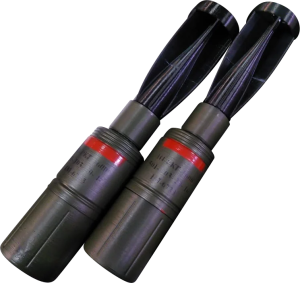Material Matters: Choosing the Right Filament for Defense Applications
When it comes to 3D printing for defense applications, material selection is paramount. The ability to choose the right filament is crucial for producing parts that meet the stringent requirements of military operations and lasts.
- Nylon (PA):
Strengths: High strength, good chemical resistance, and decent heat resistance.
Applications: Suitable for a wide range of applications, including structural components, jigs and fixtures, and replacement parts for legacy equipment. - Polycarbonate (PC):
Strengths: Excellent impact resistance, high heat resistance, and good chemical resistance.
Applications: Ideal for applications requiring high durability and the ability to withstand harsh environments. - ABS:
Strengths: Affordable, easy to print, and has good mechanical properties.
Applications: Suitable for prototyping, tooling, and non-critical components. - PEEK (Polyetheretherketone):
Strengths: High temperature resistance, excellent mechanical properties, and good chemical resistance.
Applications: Suitable for high-performance applications such as aerospace components, automotive and tank parts, tooling. - ULTEM/PEI (Polyetherimide):
Strengths: Excellent heat resistance, good chemical resistance, and high rigidity.
Applications: Suitable for demanding applications requiring high performance and durability. - TPU (Thermoplastic Polyurethane):
Strengths: Flexible, tough, and has good abrasion resistance.
Applications: Suitable for applications requiring soft, flexible parts such as gaskets, seals, and protective covers. - Carbon Fiber Reinforced Filaments:
Strengths: High strength-to-weight ratio, excellent stiffness, and good heat resistance.
Applications: Ideal for applications requiring lightweight, high-performance parts such as drone components or structural elements. - PEEK (Polyetheretherketone):
Strengths: Exceptional heat resistance, chemical resistance, and mechanical properties.
Applications: Suitable for high-performance applications such as aerospace components, automotive parts, and tooling. - PPS (Polyphenylsulfone):
Strengths: High heat resistance, good chemical resistance, and excellent dimensional stability.
Applications: Suitable for applications requiring high-temperature performance and precision. - PC (Polycarbonate):
Strengths: Excellent impact resistance, high heat resistance, and good chemical resistance.
Applications: Suitable for applications requiring high durability and the ability to withstand harsh environments.
 Choosing the Right Material
Choosing the Right Material
The best material for your defense application depends on a variety of factors, including:
- Part requirements: Consider the necessary mechanical properties, temperature resistance, and chemical resistance.
- Printing conditions: The chosen material must be compatible with your 3D printer’s settings and capabilities.
- Cost: Evaluate the cost-effectiveness of different materials and their impact on the overall production cost.
Omni3D’s Large-Format Solutions
Omni3D’s large-format industrial 3D printers are compatible with a wide range of materials, allowing you to select the best option for your specific application. Our open material system provides you with the flexibility to experiment with different filaments and find the perfect fit for your needs.
Omni3D: Your Trusted Partner for Defense Manufacturing
With a proven track record in delivering innovative 3D printing solutions, Omni3D has established itself as a leading provider for the defense sector. Our expertise extends beyond hardware to encompass a comprehensive range of engineering services, including:
- Customized Printing Solutions: Tailored to meet the specific needs of defense applications, ensuring optimal part performance and quality.
- Material Selection and Optimization: Leveraging our deep understanding of materials to select the most suitable options for your projects.
- Design Consultation: Providing expert guidance on optimizing designs for 3D printability and ensuring compliance with industry standards.
- Process Optimization: Identifying and implementing strategies to streamline your 3D printing workflows, enhancing efficiency and reducing costs.
- Case Study: Empowering the Polish Army
Omni3D has successfully collaborated with the Polish Army, providing critical 3D printing solutions for a variety of applications.
Our expertise has enabled the Polish military to:
- Accelerate Spare Part Production: Reduce downtime and maintain operational readiness by producing replacement parts on-demand.
- Prototype New Designs: Rapidly iterate and test new concepts, leading to innovative and more effective solutions.
- Improve Supply Chain Resilience: Reduce reliance on external suppliers and mitigate risks associated with disrupted supply chains.
Ready to Explore the Possibilities?
Request a quote for our 3D printing services and discover how Omni3D can revolutionize your defense manufacturing operations.
Request a Quote
Download our White Paper: “Deploying LARGE-FORMAT3D Printing for Battlefield Advantage”
Gain valuable insights into the transformative power of 3D printing in the defense industry. Our white paper explores real-world applications, case studies, and the benefits of partnering with Omni3D.
Download White Paper
Let’s work together to elevate your defense manufacturing capabilities.


